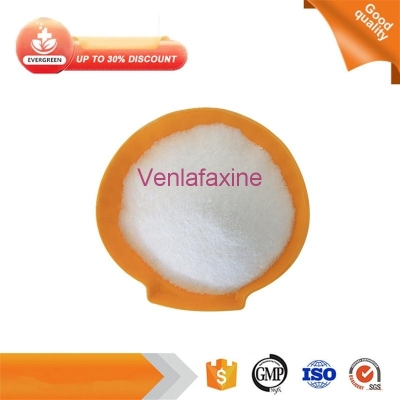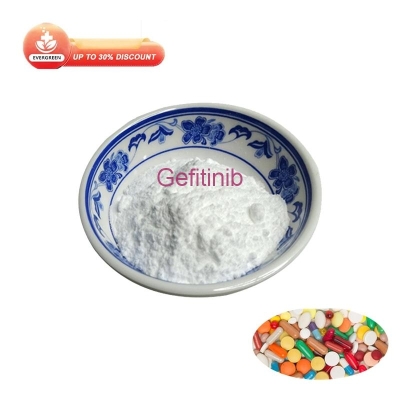-
Categories
-
Pharmaceutical Intermediates
-
Active Pharmaceutical Ingredients
-
Food Additives
- Industrial Coatings
- Agrochemicals
- Dyes and Pigments
- Surfactant
- Flavors and Fragrances
- Chemical Reagents
- Catalyst and Auxiliary
- Natural Products
- Inorganic Chemistry
-
Organic Chemistry
-
Biochemical Engineering
- Analytical Chemistry
- Cosmetic Ingredient
-
Pharmaceutical Intermediates
Promotion
ECHEMI Mall
Wholesale
Weekly Price
Exhibition
News
-
Trade Service
Pituitary neuroendocrine tumors (PitNET) are one of the
most common intracranial tumors.
Due to its extensive tumor heterogeneity and lack of high-quality tissue for the discovery of biomarkers, the molecular mechanisms leading to its occurrence are far from fully defined
.
Therefore, more research is needed to improve the existing clinicopathological classification system, and advanced treatment strategies such as targeted therapy and immunotherapy need to be explored
.
On October 28, 2022, Fudan University Zhao Yao, Ding Chen and Zhang Qilin jointly published a joint newsletter in Cell Research (IF=46) online The research paper "Integrated proteogenomic characterization across major histological types of pituitary neuroendocrine tumors," which uses integrin genomics to expand the understanding
of pathophysiology of pituitary neuroendocrine tumors.
The study conducted the largest integrative genomics, transcriptomics, proteomics and phosphorylated proteomics analysis
reported to date on 200 PitNET patients.
Genomic data suggest that an increase in GNAS copy number can serve as a reliable diagnostic marker
for excessive proliferation of the PIT1 lineage.
Proteomics-based classification of PitNETs identified 7 clusters in which tumor overexpression of epithelial mesenchymal transformation (EMT) markers clustered into a more aggressive subgroup
.
Further analysis identified potential therapeutic targets, including CDK6, TWIST1, EGFR and VEGFR2, targeting different clusters
.
Immunophenotyping explored the potential of immunotherapy applications in PitNET, discovering the link between alterations in the JAK1-STAT1-PDL1 axis and immune exhaustion, and JAK3-STAT6-FOS/JUN The link between
changes in axes and immune infiltration.
These identified molecular markers and changes
in different clusters/subtypes were further confirmed in an independent cohort of 750 PitNET patients.
This protein genomic analysis across traditional histological boundaries has improved the current understanding of PitNET pathophysiology and proposed new therapeutic targets and strategies
.
Pituitary neuroendocrine tumors (PitNET, also known as pituitary adenomas) are one of the most common intracranial tumors, with an incidence of about 70-90 cases
per 100,000 people.
A series of clinical manifestations of PitNET are caused by excessive hormone secretion and invasion of surrounding structures such as II~V cranial nerves, hypothalamus and internal carotid artery.
Although most are considered benign, more than 40% of PitNETs are invasive at the time of
surgery.
Treatment of PitNETs is challenging due to the difficulty of complete surgical resection and the limited availability of chemoradiotherapy options
The 2017 World Health Organization (WHO) classification highlighted three main differentiation transcription factors (TFs), including those used for GH, PRL, and more TSH's POU1F1 (also known as PIT1); TBX19 (also known as TPIT) is used for ACTH differentiation; and NR5A1 (also known as SF1) for gonadotropin (GN) differentiation
.
In addition, clinically stationary adenomas do not exhibit hormone hypersecretion, are considered non-functional, and may also express one of three specific TFs, including resting PIT1, stationary TPIT, and stationary SF1
。 Empty cell adenomas (NULL) are also clinically asymptomatic, although TFs remain unknown
.
Multi-hormone PitNETs produce two or more hormones and are therefore not well defined
by cell lineage.
This classification also indicates several specific tumor variants with higher recurrence rates, including sparse granular growth hormone adenoma, male breast atrophic adenoma, stationary adrenotropic adenoma, Crooke cell adenoma, and multihormone PIT1-positive adenoma
.
Immune landscape in PitNETs (Image from Cell Research).
PitNET medical options are limited
.
Currently, surgery is the first-line treatment for PitNETs, while pharmacological interventions are available for two specific PitNET subtypes, dopamine agonists for PRL PitNETs, and somatostatin analogues for GH PitNETs
。 However, the overall efficiency of both drugs was moderate, and no other drug showed a significant effect
on other PitNET subtypes.
While several promising molecular targets, such as EGFR for ACTH PitNETs, have been identified, more drug targets are needed to develop effective therapeutics
.
Genetic studies have revealed several variants associated with tumorigenesis, such as GNAS, MEN1, NR3C1, and AIP
.
Since 2015, the authors have identified other disease-causing mutations in PitNET in a growing list of genes, including USP8, KIF5A, and others GRB10 and CDH23
.
Among them, GNAS and USP8 mutations are the main pathogenic factors
of GH and ACTH PitNETs, respectively.
However, the biological mechanism between copy number changes (CNAs) and tumorigenesis is unclear
.
Only three TFs (PIT1, TPIT, and SF1) are currently used to describe the major PitNET cell lineages, although patients exhibit different hormone secretion profiles and different clinical prognosis that these together indicate additional TFs may be involved in tumorigenesis
.
While most published studies have been genomic or transcriptomic analyses, integrating multiomics analysis can provide the comprehensive perspective necessary to determine robust pathogenesis, prognosis, and therapeutic markers
across different PitNET lineages.
Advances in integrating multiomics strategies, such as proteomics and phosphoproteomics analysis combined with genomic analysis, have advanced the development of
treatments for several different tumor types.
In this regard, the comprehensive characterization of the protein genome map is critical
for the development of therapeutic strategies.
To do this, the authors analyzed genomic, transcriptomics, proteomics, and phosphorylated proteomics datasets from 200 PitNETs and seven anterior pituitary glands (APGs) as controls
.
The authors established a new, molecularly unbiased classification of PitNET subtypes to understand their pathophysiology and explore potential operable targets for each subtype
.
In addition, the data generated by these analyses will be an essential resource
for PitNET for further biological and functional research and drug discovery.
Original link:







